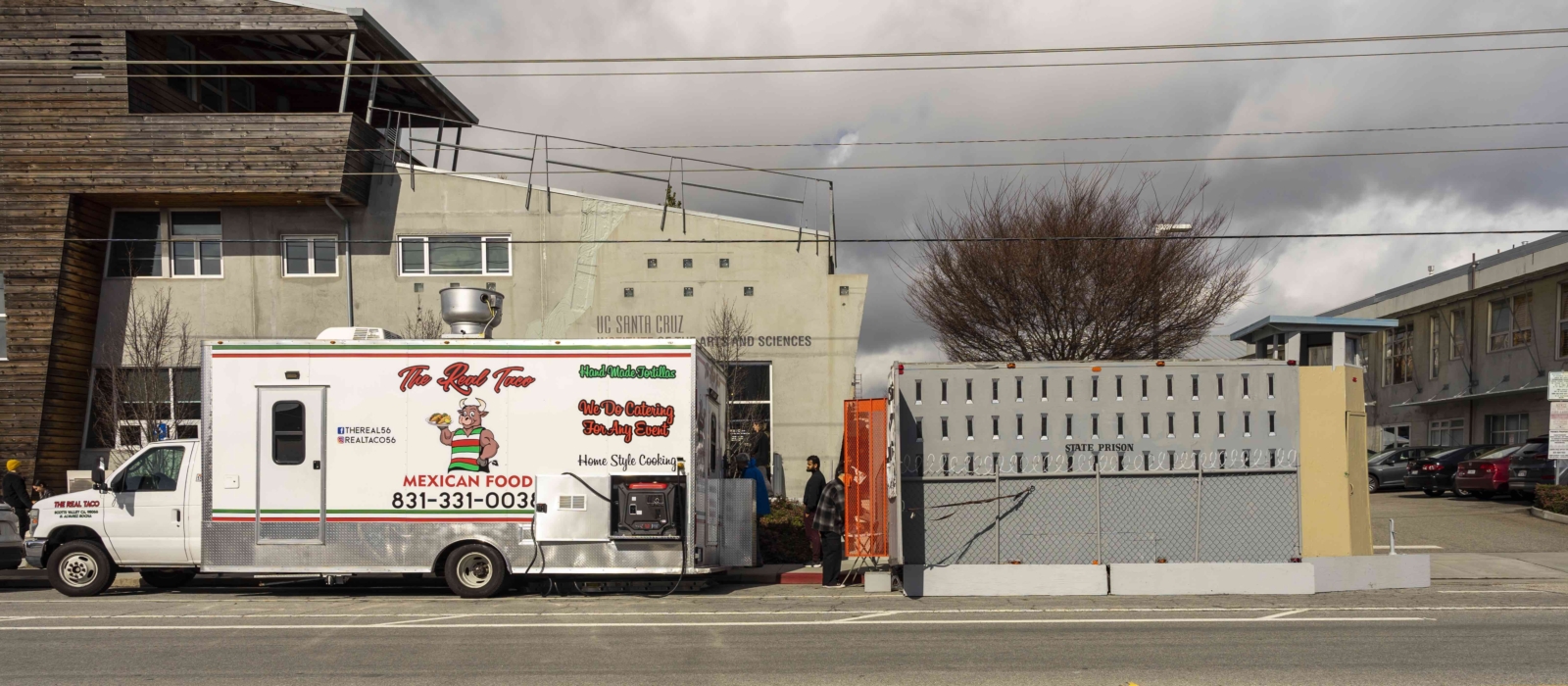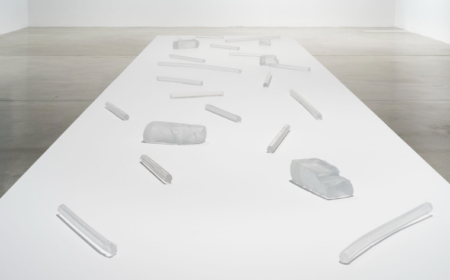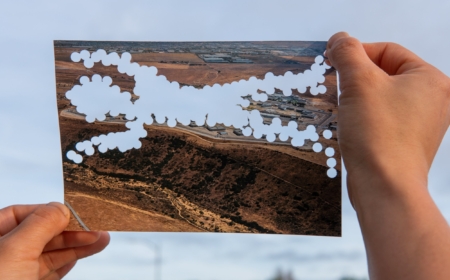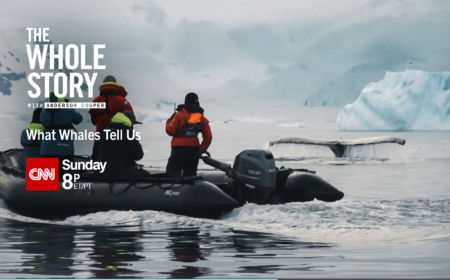Lookout Santa Cruz, February 2,2023
BY WALLACE BAINE
UC Santa Cruz is launching a new endeavor this month, but this one is as much for townies as it is for the university community.
UCSC is opening its new Institute of the Arts and Sciences (IAS), not on campus, but on the Westside of Santa Cruz, representing one of the most prominent off-campus access points to the university in the long shared history between UCSC and its host city.
The institute debuts in its beautiful new space on Delaware Street on Sunday with two new art shows — the photography of activist and CalArts faculty member Ashley Hunt, and the meditative work of Indigenous multimedia artist and MacArthur Fellow Sky Hopinka.
The institute is not a new entity. It was established in 2014 on campus as a means to marry the creative arts and research in the sciences and humanities, always with a goal of opening a big, bold gallery space in the city of Santa Cruz. That day has now arrived.
The institute’s director and chief curator, Rachel Nelson, said the facility’s opening marks the debut of a major new cultural hub in Santa Cruz.
“I hope you noticed the 372 free parking spots,” she laughed, in the building’s front lobby facing Delaware Street.
The institute will not only regularly host nationally and internationally significant art shows — free to the public — but it will become a major new landing spot in Santa Cruz’s rich art-venue scene, keeping company with the R. Blitzer Gallery on the far west end of Santa Cruz, and participating in future First Friday events.
“It’s a big deal for the university,” Nelson said of the institute’s opening. “And it’s a big deal for the community. I’m really hoping that people will think that way, so that we can add to the art and culture of the community and the university in a way that’s incredibly accessible.”

Largely thanks to the geography of UCSC’s relative remoteness in relation to the rest of Santa Cruz, the town/gown divide has been more pronounced in Santa Cruz than in many other college towns. The Seymour Marine Discovery Center at Long Marine Lab, west of Natural Bridges State Beach, has long been a portal between non-university locals and what’s happening at UCSC. Before its demise in 2013, Shakespeare Santa Cruz regularly brought townies to campus each summer. But for the most part, the university’s opportunities to regularly engage with residents of the city and county have been sporadic. The IAS has the potential to be a regular touchstone between locals reluctant to visit campus and students, staff and faculty at UCSC.
The two new shows are linked by a common theme, an initiative launched more than three years ago at IAS called “Visualizing Abolition,” focused on prison reform and, according to the program’s literature, “to change the narrative that links prisons to justice.”
Hunt’s documentary photography — the show is titled “Degrees of Visibility / Ashes Ashes” — casts an eye to the landscapes around modern-day prisons and how often they are hidden from public view, forming a kind of an out-of-sight-out-of-mind architectural metaphor for how the public sees — or, more significantly, doesn’t see — prisons.
Hopinka’s show, in the institute’s larger gallery, is called “Seeing and Seen” and it uses film, photography, audio and text to create a context of prisons in American history seen through the eyes of a member of the Ho-Chunk Nation of the upper Midwest. (Hopinka’s show is so multifaceted that one museum cannot contain it; part of the exhibition is also being presented at the San Jose Museum of Art.)
The shows’ opening, as well as the institute’s grand opening, takes place Sunday from noon to 5 p.m., with live music and food trucks. The new space is located at 100 Panetta Ave., off Delaware Street, just a block west of Swift Street.
The 15,000-square-foot building contains three galleries as well as a small screening room and event space. It was originally designed by Santa Cruz architect Mark Primack, whose office is just around the corner on Swift Street. The building was constructed as a corporate office building a decade ago, but its first occupant consolidated operations and abandoned the space. The building was left unoccupied for several years.
“It was a little frustrating for me,” said Primack, “because the joy I get is watching a space I designed used and enjoyed. And I’m not used to seeing them shuttered up. My office is right nearby, so I’d go past all the time wondering what was ever going to happen to it.”
Enter UCSC. The building has not only been converted into the IAS, but it is also used for the “Visualizing Abolition” curriculum program. As for the art space, Primack credits Nelson with making the modifications to transform an innovative office space into a gallery space, adding walls and other elements to better control lighting and climate.
“In a situation like this, when somebody invites me to come in and see what they’ve done in a building, I brace myself because there could be a lot of surprises,” said Primack. “[But in this case], it was a step forward and the space as it is right now serves the needs of the people who are in it. Rachel did a great job. It all looks like it belongs.”
Nelson touts the institute as a learning space for UCSC students, close to 20 of whom work in the galleries as interns, learning real-world applications in presenting work and designing exhibitions. But from the community’s perspective, the IAS can serve “as the gateway to the university,” she said.
The two shows that open the institute will remain there through April 16, after which two new exhibitions will be presented. In the coming months and years, the institute is planning to adapt to community needs, offering itself up as a performance space, an artist-talk and lecture venue, a schools destination and a First Friday stop. It will also operate as a collaborator or co-presenter with other cultural centers, including the Museum of Art & History in downtown Santa Cruz.
“It took me a moment when I came in here for the first time,” said Nelson, standing in the main gallery of the institute less than a week from opening. “It was really, really raining outside and I thought, ‘Wow, this is just so big. How are we going to do this?’ Then, when I could sit down and start drawing pictures of the walls on napkins and stuff, it was then I realized, ‘You know what, this is going to be amazing.’”
Sunday’s opening of the of the new UC Santa Cruz Institute of the Arts and Sciences Galleries runs from noon to 5 p.m. at 100 Panetta Ave. on Santa Cruz’s Westside, complete with food trucks and live music. It’s free and open to the public. Regular hours will be Tuesday through Sunday, noon to 5 p.m., with free admission to all exhibits and public programs.
Wallace Baine is Lookout’s City Life Correspondent, covering arts, music and culture, as well as the people who make Santa Cruz and neighboring communities tick. He also writes “The Here & Now,” a periodic column that offers his take on the news of the day — and the news you’d otherwise miss.




